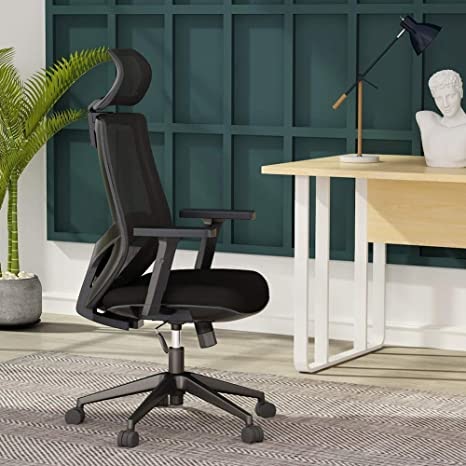
Many of us spend a significant amount of our day sitting at a desk. And the chair we sit on plays a crucial role in our comfort and well-being.
Unfortunately, many people underestimate the importance of ergonomic chairs, and instead opt for non-ergonomic options that can lead to a host of problems.
In this blog, we’ll explore the top 11 issues associated with using non-ergonomic chairs.
Poor Posture
Non-ergonomic chairs often lack proper lumbar support and fail to promote good posture. This can lead to slouching, rounding of the shoulders, and an imbalance in the spine, resulting in chronic back pain and discomfort over time.
Maintaining correct posture is not only essential for spinal health but also for overall well-being and confidence in everyday activities.
Back Pain
One of the most common problems associated with non-ergonomic chairs is back pain.
Without adequate lumbar support and adjustable features, these chairs place unnecessary strain on the lower back, leading to muscle tension, stiffness, and even more serious spinal issues.
Back pain can interfere with daily activities and in turn decrease the quality of life.
Neck and Shoulder Strain
Non-ergonomic chairs typically have fixed armrests and backrests that do not support the natural curvature of the spine.
As a result, users may find themselves hunching forward to reach their workspace, leading to neck and shoulder strain.
Such strain not only causes discomfort but can also lead to long-term musculoskeletal problems, affecting mobility and overall health.
Increased Risk of Musculoskeletal Disorders
Prolonged use of non-ergonomic chairs can contribute to the development of musculoskeletal disorders such as:
- Carpal tunnel syndrome
- Tendonitis
- Bursitis
Prevention through ergonomic seating is key to avoiding the pain and limitations associated with these disorders.
Reduced Blood Circulation
Chairs that are not designed with ergonomics in mind may have hard surfaces that restrict blood flow to the legs and feet. This can lead to numbness, tingling, and discomfort, particularly during long periods of sitting.
Improved blood circulation is essential for delivering oxygen and nutrients to tissues, maintaining tissue health, and preventing discomfort and complications.
Decreased Productivity
Discomfort caused by non-ergonomic chairs can significantly impact productivity in the workplace. When employees are distracted by pain and discomfort, they are less focused and less able to perform at their best.
This helps highlight the importance of investing in ergonomic office chairs in Dubai for improved performance and productivity.
Fatigue and Energy Drain
Sitting in a non-ergonomic chair for extended periods can leave users feeling fatigued and drained of energy. The body must work harder to maintain balance and support, leading to feelings of tiredness and lethargy.
Fatigue not only affects productivity but can also impact mood and overall enjoyment of daily activities.
Impact on Overall Health
Poor seating posture can have far-reaching effects on overall health and well-being.
In addition to physical discomfort, non-ergonomic chairs can contribute to stress, anxiety, and mood disturbances, affecting both mental and emotional health.
A holistic approach to health includes consideration of environmental factors such as seating, which can influence overall quality of life.
Increased Risk of Injury
Non-ergonomic chairs pose a higher risk of injury due to their lack of support and adjustability. Users may be more prone to falls, strains, and other accidents, particularly if the chair is unstable or poorly constructed.
Workplace injuries not only cause physical harm but can also lead to financial burdens and legal liabilities, emphasizing the importance of prioritizing safety through ergonomic design.
Long-Term Health Consequences
Ignoring the importance of ergonomic seating can have long-term consequences for health and quality of life. Chronic pain, spinal misalignment, and other musculoskeletal issues may develop over time, leading to reduced mobility and independence in later years.
Investing in office chairs is an investment in long-term health and well-being, supporting a higher quality of life and greater independence as individuals age.
Impact on Employee Morale and Engagement
Non-ergonomic chairs can have a negative effect on employee morale and engagement. When workers feel uncomfortable or unsupported in their workspace, it can lead to feelings of dissatisfaction and disengagement.
Employees may be less motivated to perform at their best and may even experience higher rates of absenteeism and turnover. Providing ergonomic chairs demonstrates a commitment to employee well-being and creates a positive work environment where individuals feel valued and supported.
Enhanced morale and engagement contribute to a more cohesive team dynamic, improved collaboration, and ultimately, higher levels of productivity and organizational success.
Endnotes
The use of non-ergonomic chairs can lead to a multitude of problems, ranging from back pain and poor posture to decreased productivity and increased risk of injury.
Investing in ergonomic seating solutions is essential for maintaining comfort, promoting good health, and enhancing overall well-being.
So, what are you waiting for? Change your ways and start prioritizing ergonomic chairs for a healthier and more productive work environment.